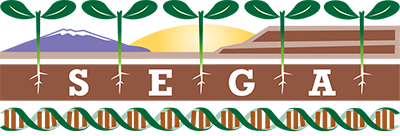You are here
Phenotypic variation in nurse traits and community feedbacks define an alpine community.
Publication Type:
Journal ArticleSource:
Ecology letters, Volume 14, Issue 5, p.433 - 43 (2011)ISBN:
1461-023XURL:
http://www.ncbi.nlm.nih.gov/sites/entrez?Db=pubmed&DbFrom=pubmed&Cmd=Link&LinkName=pubmed_pubmed&LinkReadableName=Related%20Articles&IdsFromResult=21366815&ordinalpos=3&itool=EntrezSystem2.PEntrez.Pubmed.Pubmed_ResultsPanel.Pubmed_RVDocSumhttp://www.ncbi.Keywords:
arizona, Ecosystem, Genotype, Geum, Models, Biological, Phenotype, Plant Leaves, Plant Roots, Plant Stems, Population Dynamics, Selection, GeneticAbstract:
<p>Much is known about facilitation, but virtually nothing about the underlying genetic and evolutionary consequences of this important interaction. We assessed the potential of phenotypic differences in facilitative effects of a foundation species to determine the composition of an Alpine community in Arizona. Two phenotypes of Geum rossii occur along a gradient of disturbance, with 'tight' competitive cushions in stable conditions and 'loose' facilitative cushions in disturbed conditions. A common-garden study suggested that field-based traits may have a genetic basis. Field experiments showed that the reproductive fitness of G. rossii cushions decreased with increasing facilitation. Finally, using a dual-lattice model we showed that including the cost and benefit of facilitation may contribute to the co-occurrence of genotypes with contrasting facilitative effects. Our results indicate that changes in community composition due to phenotypic differences in facilitative effects of a foundation species may in turn affect selective pressures on the foundation species.</p>
- Log in to post comments
- Google Scholar
- RTF
- EndNote XML
- RIS
Theme by Danetsoft and Danang Probo Sayekti inspired by Maksimer
